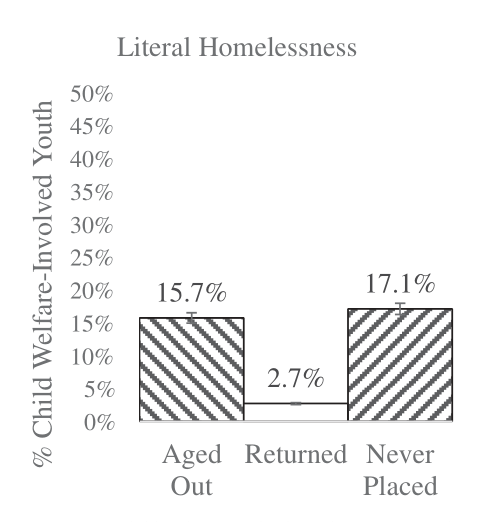Introduction
Children who either lost their parents or were rejected by them are forced to live in relative or non-relative families or pre-adoption homes provided by the state. A lack of parents negatively impacts them: they tend to develop different problems and usually have little or no support. In that way, I think it is essential for all to research the situation with foster children.
The Scope of the Problem
I have found that the number of children who enter the foster care system each year is different from year to year. According to Gypen et al. (2017), there are about 400 thousand foster children, and almost half of them live in non-relative families. In addition, according to the same article, they are understudied. Taken that, according to Dubois-Comtois et al. (2021), more than 90% of pre-schooled children in the U.S. in foster care have at least one psychiatric disorder. As for me, it is enough reason to be concerned about the problems of foster care.
Mental and Social Problems
Children in foster care are often more prone to suffer from mental illnesses, mistreatment, abuse, substance abuse, and homelessness. They are prone to crimes: according to the study, up to 60% of them have at least one crime by the age of 24 (Gypen et al., 2017). According to statistics from the website Alternative Family Services (2020), almost half of them never graduate high school, and half develop substance abuse by 24. Maltreatment is another issue: according to the research of Huffhines et al. (2020), it increases the risk of internalizing symptoms, such as depression or anxiety. All those facts signify their particular vulnerability to various threats.

Here I show the diagram, which presents what researchers mean by internalizing and externalizing. The diagram is taken from the article of Carragher et al. (2015), which discusses the problem of mental disorders. Thus, the externalizing problems are connected with substance abuse and antisocial behavior, such as the tendency to perform crimes, which is unfortunately typical for foster youths (Gypen et al., 2017).
According to the Alternative Family Services website (2020), foster children seven-time more prone to depression and five-time more prone to anxiety problems than the rest of the children. According to the study of Villagrana et al. (2018), self-stigmatization and avoiding psychological and psychiatric treatment is typical for foster kids. In that way, the treatment becomes ineffective, and their mental health issues persist. I think that the psychological and social problems of foster kids should be more recognized and studied more attentively.
Homelessness and Lack of Comfort

I will show other actual problems, which endanger foster children. As for homelessness, according to Fowler et al. (2017), approximately 15% of aged out youths are prone to be literally homeless; here, I show the diagram which presents those data. The number of homeless is even higher among those kids who were newer placed at home. The Alternative Family Services (2020) website data show that one out of five of them is homeless. In addition, according to the study of Leathers et al. (2019), foster children are often experiencing disruptions, sometimes three or more per 24 months, causing stress and deepening the mentioned mental health and social problems. Thus, the life of foster kids usually lacks both comfort and stability.
Conclusion
I can conclude that the situation with foster care kids is disturbing, considering all the presented numbers and a lack of studies. Children in foster care tend to develop mental illnesses and asocial behavior, which lead to crimes and drug abuse. In addition, they have little social support and often can be left homeless after aging out. In my opinion, it means that the situation with foster kids needs further researches and should be improved.
References
Alternative Family Services. (2020). 29 Surprising Foster Care Facts. Web.
Carragher, N., Krueger, R. F., Eaton, N. R., & Slade, T. (2015). Disorders without borders: Current and future directions in the meta-structure of mental disorders. Social Psychiatry and Psychiatric Epidemiology, 50(3), 339–350. Web.
Dubois-Comtois, K., Bussières, E. L., Cyr, C., St-Onge, J., Baudry, C., Milot, T., & Labbé, A. P. (2021). Are children and adolescents in foster care at greater risk of mental health problems than their counterparts? A meta-analysis. Children and Youth Services Review, 127, 106100. Web.
Fowler, P. J., Marcal, K. E., Zhang, J., Day, O., & Landsverk, J. (2017). Homelessness and aging out of foster care: A national comparison of child welfare-involved adolescents. Children and Youth Services Review, 77, 27–33. Web.
Gypen, L., Vanderfaeillie, J., de Maeyer, S., Belenger, L., & van Holen, F. (2017). Outcomes of children who grew up in foster care: Systematic-review. Children and Youth Services Review, 76, 74–83. Web.
Huffhines, L., Jackson, Y., & Stone, K. J. (2020). Internalizing, externalizing problems and psychiatric hospitalizations: Examination of maltreatment chronicity and coping style in adolescents in foster care. Journal of Child & Adolescent Trauma, 13(4), 429–441. Web.
Leathers, S. J., Spielfogel, J. E., Geiger, J., Barnett, J., & Vande Voort, B. L. (2019). Placement disruption in foster care: Children’s behavior, foster parent support, and parenting experiences. Child Abuse & Neglect, 91, 147–159. Web.
Villagrana, M., Guillen, C., Macedo, V., & Lee, S. Y. (2018). Perceived self-stigma in the utilization of mental health services in foster care and post foster care among foster care alumni. Children and Youth Services Review, 85, 26–34. Web.